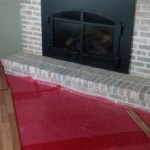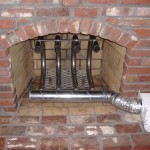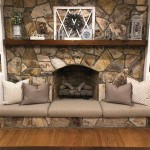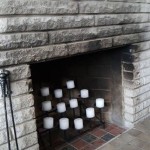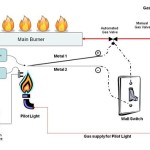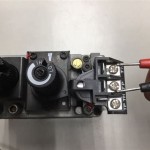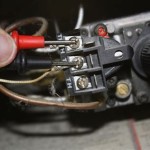Replacement Fireplace Insert Blower: Choosing the Right Unit and Ensuring Optimal Performance
Fireplace inserts offer a significant upgrade to traditional open fireplaces, providing enhanced heating efficiency and improved aesthetics. A crucial component of many fireplace inserts is the blower, also known as a fan, which circulates heated air into the room, maximizing the unit's heating potential. Over time, these blowers can wear down, become noisy, or fail completely, necessitating a replacement. Selecting the correct replacement fireplace insert blower is vital to restoring the insert's performance and maintaining efficient heating.
This article provides a comprehensive guide to selecting and installing a replacement fireplace insert blower, covering key considerations, types of blowers, and troubleshooting potential issues. By understanding these aspects, homeowners can make informed decisions and ensure their fireplace insert continues to provide reliable and efficient heating for years to come.
Understanding the Role of the Fireplace Insert Blower
The primary function of a fireplace insert blower is to enhance the convection heating process. Without a blower, heat radiates directly from the insert into the immediate surrounding area. This radiant heat is effective but limited in its reach. The blower draws cooler air from the room, channels it through the insert's heat exchanger, and then forces the warmed air back into the room. This forced-air circulation distributes heat more evenly throughout the space, warming a larger area more quickly and efficiently. This process significantly reduces temperature stratification, where warmer air accumulates near the ceiling while the lower portions of the room remain cooler. Therefore, the blower is not simply an accessory; it is an integral part of the insert's overall heating system, contributing significantly to its efficiency and effectiveness.
Furthermore, a functional blower prevents the insert from overheating. By continuously removing heat from the insert's firebox or heat exchanger, the blower helps to maintain a safe operating temperature. Excessive heat can damage internal components, reduce the lifespan of the insert, and even pose a fire hazard. A malfunctioning or absent blower can compromise these safety mechanisms, increasing the risk of overheating and potential damage.
Finally, the blower contributes to the overall comfort and convenience of using a fireplace insert. With efficient heat distribution, homeowners can experience a more consistent and comfortable room temperature. This reduces reliance on supplemental heating sources, such as space heaters, and can lead to energy savings. In addition, some blowers come equipped with variable speed controls, allowing users to adjust the airflow and heat output to their specific needs and preferences. This level of control enhances the user experience and optimizes the heating performance of the fireplace insert.
Key Considerations When Choosing a Replacement Blower
Replacing a fireplace insert blower requires careful consideration to ensure compatibility and optimal performance. The following factors are essential when selecting a replacement unit:
Model Compatibility: The most crucial factor is compatibility with the specific fireplace insert model. Each insert is designed with specific dimensions and electrical specifications for its blower. Refer to the fireplace insert's owner's manual or the original blower unit for the model number and required specifications. Using a universal blower or a blower designed for a different model can result in poor performance, damage to the insert, or even safety hazards. Manufacturers often provide blower upgrades or replacements specifically designed for their inserts, ensuring a perfect fit and optimal performance.
Airflow (CFM): Airflow, measured in cubic feet per minute (CFM), indicates the volume of air the blower can move. A blower with insufficient CFM will not effectively circulate heat, while an excessively powerful blower may be louder and consume more energy than necessary. Refer to the original blower's specifications or the fireplace insert's manual to determine the appropriate CFM rating. Factors such as the size of the room and the insert's heating capacity should also be considered. For larger rooms or inserts with higher BTU output, a blower with a higher CFM rating may be required.
Voltage and Amperage: The replacement blower must match the voltage and amperage requirements of the fireplace insert's electrical system. Typically, fireplace insert blowers operate on standard household voltage (120V AC). The amperage rating indicates the amount of electrical current the blower draws. Using a blower with incompatible voltage or amperage can damage the blower, the insert's electrical system, or even pose a fire hazard. Always verify the voltage and amperage specifications on the original blower or in the fireplace insert's manual before purchasing a replacement.
Noise Level: Blower noise can be a significant concern, especially if the fireplace is in a living room or bedroom. Look for blowers that are specifically designed for quiet operation. Manufacturers often specify the noise level of their blowers in decibels (dB). Consider researching reviews and comparisons to gauge the actual noise levels of different blowers in real-world settings. Features like rubber grommets, balanced fans, and sound-dampening materials can contribute to quieter operation.
Bearing Type: The type of bearings used in the blower motor can impact its performance, lifespan, and noise level. Sleeve bearings are generally less expensive but can be noisier and less durable than ball bearings. Ball bearings offer smoother operation, longer lifespan, and reduced noise levels. Although blowers with ball bearings may be more expensive, they are typically a worthwhile investment in terms of long-term performance and reliability.
Warranty: A warranty provides protection against defects in materials and workmanship. Look for blowers with a reasonable warranty period, typically ranging from one to three years. A longer warranty indicates the manufacturer's confidence in the quality and durability of their product. Review the warranty terms carefully to understand what is covered and any limitations or exclusions that may apply.
Types of Fireplace Insert Blowers and Their Characteristics
While the fundamental function of all fireplace insert blowers is the same – to circulate heated air – they can differ in their design, construction, and operational characteristics. Understanding these differences can help homeowners make an informed decision based on their specific needs and preferences.
Tangential Blowers (Squirrel Cage): Tangential blowers, also known as squirrel cage blowers, are a common type used in fireplace inserts. They feature a cylindrical impeller with fins that run along its length. As the impeller rotates, it draws air in along its entire length and expels it in a focused stream. Tangential blowers are known for their relatively quiet operation and ability to move a large volume of air at a low pressure. They are well-suited for fireplace inserts where space is limited, and a wide airflow distribution is desired.
Centrifugal Blowers: Centrifugal blowers utilize a rotating impeller with blades that curve backward from the direction of rotation. Air enters the impeller axially and is discharged radially. Centrifugal blowers are capable of generating higher static pressure than tangential blowers, making them suitable for applications where air needs to be forced through restrictive ductwork or heat exchangers. While generally more powerful, centrifugal blowers can be louder than tangential blowers. Therefore, selecting a model specifically designed for quiet operation is essential.
Axial Fans: Axial fans feature blades that rotate around an axis, drawing air in and pushing it out along the same axis. While not as common in fireplace inserts as tangential or centrifugal blowers, axial fans can be used in certain models, particularly those with simpler designs. Axial fans are generally less efficient at moving air than tangential or centrifugal blowers and may be noisier. They are typically used in applications where space is extremely limited, and high airflow or static pressure is not required.
Universal Blowers: Universal blowers are designed to fit a wide range of fireplace insert models. They typically come with adjustable mounting brackets and wiring harnesses to accommodate different configurations. While universal blowers can be a convenient option, it is crucial to ensure that they meet the specific CFM, voltage, and amperage requirements of the fireplace insert. Compromising on these specifications can result in poor performance or damage to the insert.
OEM (Original Equipment Manufacturer) Blowers: OEM blowers are manufactured by the same company that produced the fireplace insert. These blowers are designed specifically for the insert model, ensuring a perfect fit and optimal performance. While OEM blowers may be more expensive than universal blowers, they offer the highest level of compatibility and reliability. Using an OEM blower can also help maintain the insert's warranty and ensure compliance with safety standards.
When selecting a replacement blower, consider the specific requirements of the fireplace insert, the desired level of noise, and the budget. Researching the different types of blowers and comparing their specifications can help homeowners make an informed decision and choose the best option for their needs.

Noisy Gas Fireplace Blower Here S How To Replace It Diy

Why Should I Get A Fireplace Blower For My Masonry

How To Replace Your Rsf Fireplace Blower Fan

Installing A Fireplace Blower Gfk4 Gfk4a In Heatilator Natural Gas

Heritage Renaissance 1 2 Blower Replacement Friendly Fires

Pellethead Replacement Pacific Energy Wood Insert Convection Blower Distribution Room Air Fan Motor Only

Regency Blower Kit I1100s I1200s Wood Inserts 170 915

Fireplaceinsert Com Osburn 1100 Fireplace Insert

Sbi Replacement Blower Many Models 44073 Friendly Fires

Fireplaces Inserts Wood Gas Fireplace Xtrordinair
Related Posts

